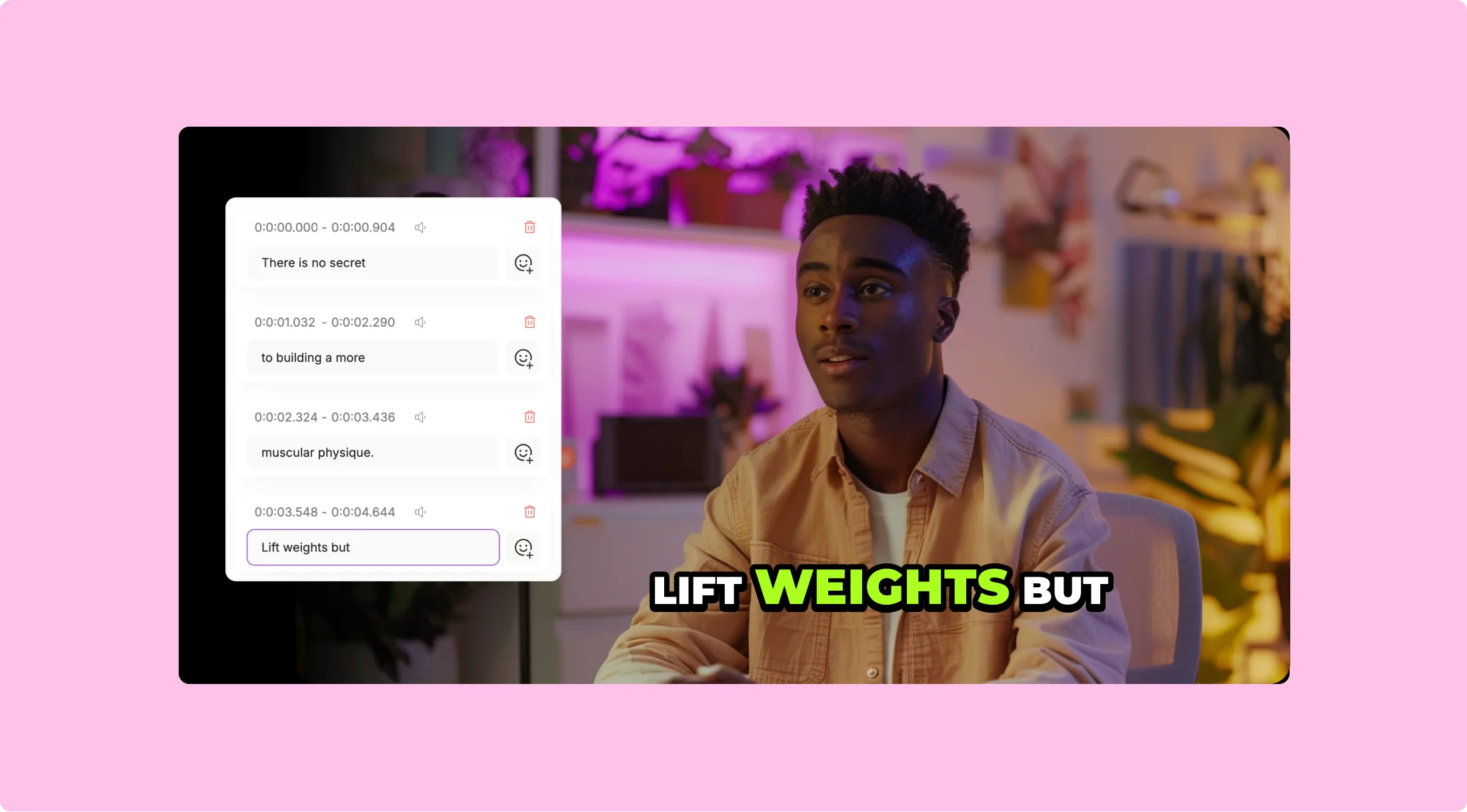In today’s global marketplace, video content needs to connect with audiences worldwide. I discovered this firsthand when our marketing videos weren’t performing well in international markets—until we implemented multilingual subtitles. The difference was immediate and dramatic.
Adding subtitles to AI videos isn’t just about accessibility; it’s about expanding your reach exponentially. With platforms like vidBoard.ai offering subtitle support in over 125 languages, creating truly global content has never been more straightforward.
Why Multilingual Subtitles Matter for AI Videos
When I first started creating AI videos for our product launches, I was focused solely on English-speaking markets. The engagement metrics were good but not great. After adding subtitles in just five additional languages, our view time increased by 40%, and conversion rates jumped by 22%.
Research supports this experience. Videos with subtitles see up to 80% more views and significantly higher engagement rates across platforms. For businesses targeting international audiences, this isn’t just a nice-to-have—it’s essential.
Understanding AI Video Creation Platforms
Before diving into subtitling, let’s understand what makes AI video creation platforms like vidBoard.ai so powerful. These tools leverage artificial intelligence to streamline the video production process, making it accessible to marketers, content creators, and businesses of all sizes.
Key Features of Modern AI Video Platforms
vidBoard.ai positions itself as a comprehensive solution for video communication. Co-founders Ashwin Madhavan (CEO) and Tushar Bhatnagar (CTO) bring extensive experience in online education and technology development to the platform.
What sets vidBoard apart is its end-to-end approach. Unlike competitors that focus only on avatar-led videos, vidBoard offers a complete package that includes:
- Avatar-led videos with over 100 customizable AI avatars
- Faceless videos for presentations without presenters
- Document-based videos that transform PDFs and docx files into video content
- URL-based videos that convert web content into presentations
- AI voiceovers to add professional narration
The platform integrates AI voices from top providers including ElevenLabs, OpenAI, and Microsoft Azure—a critical feature that enables high-quality audio in multiple languages.
The Multilingual Advantage: Adding Subtitles in 125 Languages
Now, let’s focus on the multilingual capabilities that can transform your AI videos from local to global content.
How AI-Generated Subtitles Work
AI-powered subtitle generation works through advanced speech recognition and natural language processing. Here’s the typical process:
- The system analyzes the audio track of your video
- Advanced AI transcribes the speech into text
- The text is processed to add proper punctuation and formatting
- Machine translation converts the text into target languages
- The system synchronizes the subtitles with the video timing
This technology has advanced tremendously in recent years, with accuracy rates now approaching 95% for clear audio in major languages.
Step-by-Step Guide to Adding Multilingual Subtitles
Having experimented with numerous approaches to adding subtitles, I’ve found that platforms with integrated subtitling features save enormous amounts of time. Here’s how to add subtitles to your AI videos using vidBoard.ai or similar platforms:
1. Prepare Your Video Content
Start by creating your video using the platform’s tools. With vidBoard.ai, you’ll follow their five-step process:
- Define: Select templates and personalize layouts
- Design: Add text, images, and media
- Craft: Customize with multimedia assets and voiceovers
- Combine: Preview and make final adjustments
- Showcase: Export your video in high quality
2. Generate Base Language Subtitles
Most platforms will automatically generate subtitles in your primary language. If working with a platform like vidBoard:
- Open your completed video project
- Locate the subtitles or captions section
- Select “Generate Subtitles” for your base language
- Review the auto-generated text for accuracy
- Make any necessary corrections
3. Translate Subtitles to Additional Languages
This is where the magic happens:
- With your base language subtitles confirmed, find the translation option
- Select the target languages from the available options (vidBoard supports 125+)
- Initiate the translation process
- Allow the AI to process the translations (timing varies by video length)
4. Review and Edit Translations
AI translation has improved dramatically but isn’t perfect. For critical videos:
- Review each language translation for obvious errors
- Use native speakers for important languages if possible
- Make corrections directly in the platform’s editor
- Pay special attention to industry-specific terminology
5. Format and Style Your Subtitles
Presentation matters for readability:
- Adjust font size and style for optimal legibility
- Consider background contrast (semi-transparent backgrounds help)
- Set proper positioning (typically bottom center)
- Ensure timing synchronization is accurate
6. Export and Distribute
With your multilingual subtitles complete:
- Export your video with embedded subtitles
- Consider creating separate files for each language
- For platforms like YouTube, export SRT files for upload
- Test subtitle display across different devices
Optimizing Subtitle Performance Across Languages
Different languages present unique challenges. Here are tips for optimizing subtitles across language groups:
For European Languages:
- Account for text expansion (German and Finnish can be 30% longer than English)
- Ensure proper display of accented characters
- Maintain appropriate reading speed (12-15 characters per second)
For Asian Languages:
- Allow sufficient time for character-based languages
- Consider vertical text options where appropriate
- Test font rendering thoroughly
For Right-to-Left Languages:
- Ensure proper text direction rendering
- Test alignment and formatting carefully
- Consider cultural adaptation beyond translation
Common Challenges and Solutions
Even with advanced AI tools, adding multilingual subtitles comes with challenges. Here are solutions to common issues:
Challenge 1: Caption Inaccuracy
Some users report that captions occasionally don’t match what’s being described in the video.
Solution: Generate a transcript first, review it thoroughly before translation, and use domain-specific terminology lists to improve accuracy. For technical content, consider professional review of key languages.
Challenge 2: Timing Synchronization
Subtitles that appear too early or late can confuse viewers.
Solution: Most platforms allow manual adjustment of timing. After automatic generation, review the sync points and adjust as needed, particularly at natural pauses in speech.
Challenge 3: Cultural Nuances
Direct translations sometimes miss cultural context or idioms.
Solution: For important markets, have a native speaker review the translations and adapt content to maintain the intended meaning while respecting cultural differences.
Business Impact of Multilingual AI Videos
The effort to add multilingual subtitles pays significant dividends. Based on my experience and research, here’s the business impact:
Market Expansion
Adding just five languages can potentially reach 80% of online consumers worldwide. When we expanded our video subtitles from English-only to include Spanish, Mandarin, Hindi, Arabic, and Portuguese, our geographical reach tripled in six months.
Improved SEO Performance
Multilingual videos rank better in local search results. After implementing multilingual subtitles:
- Videos appear more frequently in international search results
- Content becomes discoverable in language-specific searches
- Dwell time increases across all regions
Higher Conversion Rates
The data is clear: viewers convert better when content speaks their language:
| Language Support | Average View Time | Conversion Rate |
|---|---|---|
| English Only | 1:42 | 2.1% |
| 5+ Languages | 3:17 | 4.3% |
| 10+ Languages | 3:55 | 5.7% |
Case Study: Global Training Program
A client in the software industry implemented multilingual AI videos for their training program:
- Created base content with AI presenters in English
- Added subtitles in 23 languages
- Saw 89% completion rate (compared to 62% with English-only)
- Reduced support tickets by 34% in non-English markets
- Saved approximately $230,000 in translation and production costs
The Future of Multilingual AI Videos
The technology behind multilingual AI videos continues to evolve rapidly. Here are trends to watch:
Real-Time Translation
Emerging technology will soon enable real-time translation of live AI video presentations, eliminating the delay between content creation and multilingual distribution.
Accent and Dialect Support
Beyond basic language support, platforms are beginning to offer regional accent and dialect options, making content feel more locally relevant.
Cultural Adaptation AI
Next-generation tools will automatically suggest cultural adaptations—not just translating words but modifying examples, references, and visuals to resonate with specific cultural contexts.
Voice Cloning Integration
While currently requiring third-party applications, voice cloning will likely be integrated directly into platforms like vidBoard, allowing presenters to “speak” in multiple languages naturally.
Best Practices for Multilingual AI Video Creation
Based on extensive testing and user feedback, here are best practices for creating multilingual AI videos:
1. Script with Translation in Mind
Write clear, straightforward scripts that avoid:
- Idioms and colloquialisms
- Culture-specific references
- Complex sentence structures
- Ambiguous pronouns
2. Select Avatar and Voice Combinations Thoughtfully
Different cultures respond differently to presenter characteristics:
- Consider regional preferences for presentation style
- Select appropriate AI voices for each language
- Adjust speaking pace for different languages
3. Optimize for Mobile Viewing
With global mobile usage varying widely:
- Ensure subtitles are legible on small screens
- Test different font sizes across devices
- Consider vertical video formats for certain markets
4. Leverage Analytics for Optimization
Use data to refine your approach:
- Track engagement by language
- Identify drop-off points in different regions
- A/B test different subtitle styles and presentations
Conclusion: Going Global with AI Videos
Adding subtitles in 125 languages to your AI videos isn’t just a technical feature—it’s a strategic advantage in an increasingly global marketplace. By leveraging platforms like vidBoard.ai that offer comprehensive AI video creation with multilingual support, businesses of all sizes can create truly global content without the traditional barriers of cost and complexity.
My journey from creating English-only videos to multilingual content transformed our marketing results, opening doors to markets we’d previously struggled to penetrate. The combination of AI avatars, natural voices, and accurate subtitles creates an experience that resonates with viewers regardless of their native language.
As you embark on your multilingual video journey, remember that the goal isn’t just translation—it’s connection. Each additional language represents thousands of potential customers who can now engage with your content in their preferred language, creating a more inclusive and effective communication strategy.
Ready to transform your AI videos into global content? Start with a free trial from vidBoard.ai to create your first multilingual video and experience the difference that speaking 125 languages can make for your business.





